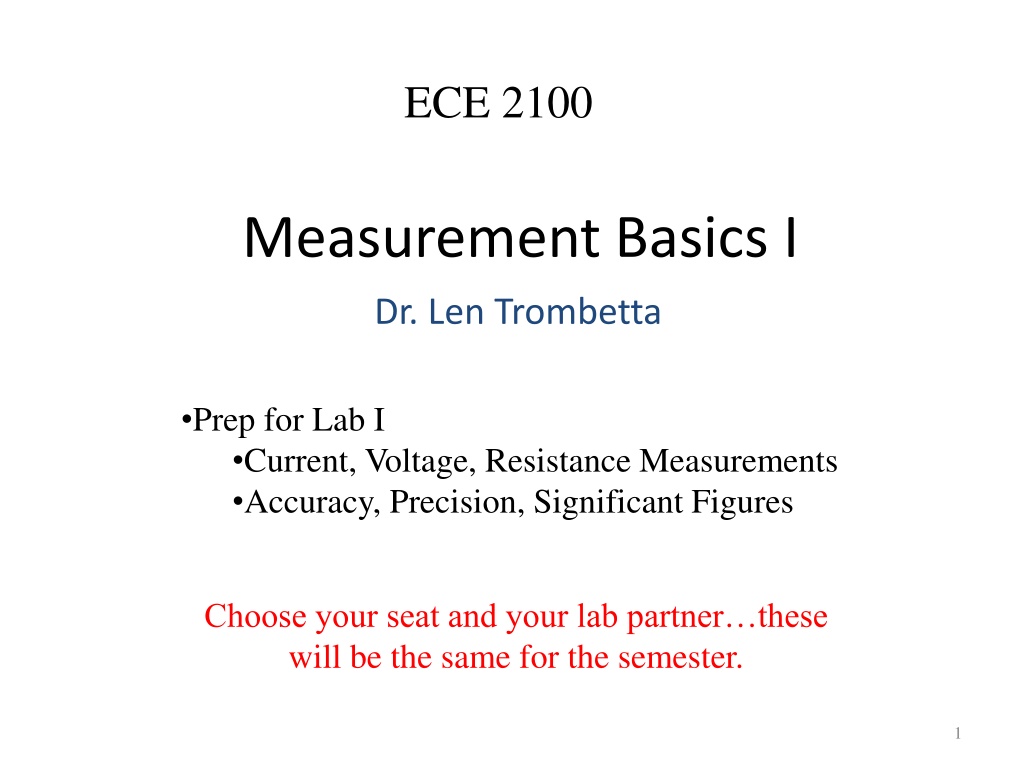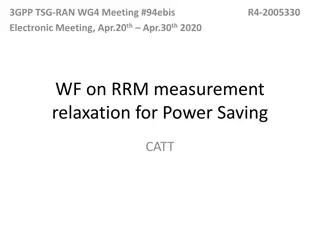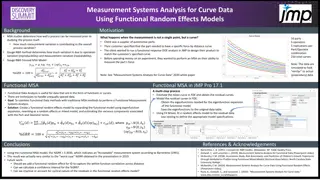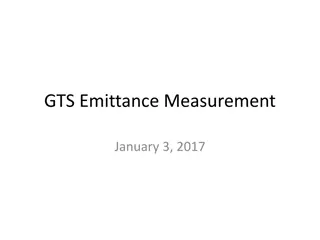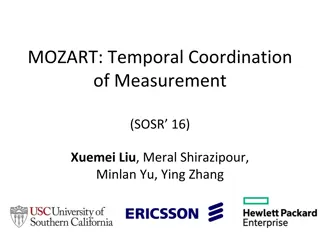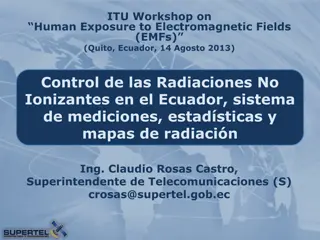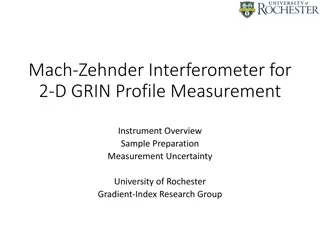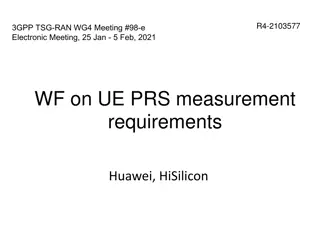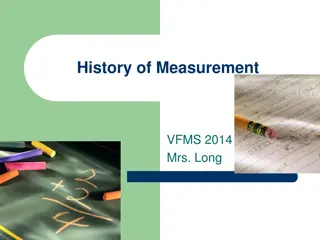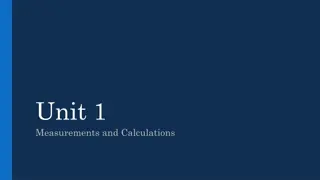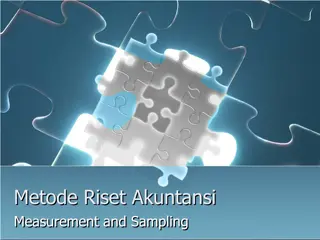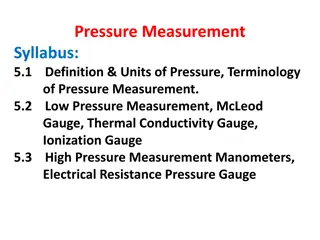Measurement Basics I
Delve into the fundamental concepts of measurement accuracy, precision, and significant figures in ECE 2100 with Dr. Len Trombetta. Understand the importance of calibration, resolution, and range in ensuring precise measurements. Explore the nuances of significant figures and how to determine the appropriate number to include in your reports. Discover how to handle doubtful digits and maintain measurement integrity in your experiments.
Download Presentation

Please find below an Image/Link to download the presentation.
The content on the website is provided AS IS for your information and personal use only. It may not be sold, licensed, or shared on other websites without obtaining consent from the author.If you encounter any issues during the download, it is possible that the publisher has removed the file from their server.
You are allowed to download the files provided on this website for personal or commercial use, subject to the condition that they are used lawfully. All files are the property of their respective owners.
The content on the website is provided AS IS for your information and personal use only. It may not be sold, licensed, or shared on other websites without obtaining consent from the author.
E N D
Presentation Transcript
ECE 2100 Measurement Basics I Dr. Len Trombetta Prep for Lab I Current, Voltage, Resistance Measurements Accuracy, Precision, Significant Figures Choose your seat and your lab partner these will be the same for the semester. 1
Accuracy, Precision, and Significant Figures* Definitions: Accuracy: the degree to which a measurement is free from error Is the meter calibrated correctly? Is it working correctly? Is it broken?? Resolution: The smallest difference that can be measured Usually the right-most digit on a digital multimeter *See N.E.R.D. documentation 2
Accuracy, Precision, and Significant Figures Range: The difference between the largest and smallest possible measurement For our multimeters, the smallest measurement is 0, so range is the maximum measureable value. Precision: the degree of refinement of the measurement Precision = Range / Resolution The 34405A has a dc voltage resolution of 105. For example, on the 1 V scale, the resolution is 0.1 mV. On the 100 mV scale, the resolution is 1 V. So range/resolution = 105. 3
Trombettas Weight Dr. T. gets on the scale and it reads 94.226535 lbs. Is this accurate? Is this precise? (not actually Trombetta) 4
Dr. T. gets a new scale and it reads 180.2 lbs. Is this accurate? Is this precise? (still not actually Trombetta) 5
Significant Figures The number of significant figures reflects the measurement precision. How many sig figs should I include? How do I add/subtract/multiply/divide numbers with different sig figs? In any report, formal or informal, always use an appropriate number of significant figures. The graders will be looking for this. 6
Doubtful Digits The last digit (maybe two) on a digital meter will bounce around. These are the doubtful digits . Rule: Retain one doubtful digit . This determines how many significant figures you will use. If the measured value is noisy , fewer significant figures will be used. 7
How Many Sig Figs? Voltage measurement gives vE = 1.354 [V] (4 sig figs) Current measurement gives iE = 0.21 [A] (2 sig figs) Power absorbed = vEiE = (1.354)(0.21) = 0.28 [W] (2 sig figs) 8
Percent Error %????? = 100?????? ????????? ????????? For example, %????? = 100????? ????? ????? 9
Percent Error when Considering a Measurement in the Laboratory %????? = 100???????? ????????? ????????? Often in laboratory measurements, the thing you are testing is the accuracy of your measurement process. In that case, %????? = 100????? ????? ????? You need to: Develop a feel how much error is expected. Know when to suspect a measurement s validity. 10
We will look at a simple circuit We will measure vO and iP. This will require iP R1 + The Breadboard The Power Supply The Multimeter Voltage Current Resistance Resistors vP - + R2 vO - 11
The Breadboard Groups of five holes are connected together but they are NOT connected to these groups or to these. Where a red line is indicated, the groups of five are connected together. Similarly for blue; but, red is not connected to blue. 12
The Power Supply Course Adjust Fine Adjust Current Limit Three adjustable dc sources: 0 30 [V] (two of these) 2 6.5 [V] DC 13
The Multimeter A V, common power A V dc: Can be set for dc or ac voltage dc or ac current resistance some other things multimeter probes 14
Resistors Properties: Value (resistance) Determined by measurement or color code (next slide) Power Rating What is the largest power dissipation before damage or danger? Your lab kit: power rating is [W] Tolerance What is the largest likely variation from the stated resistance value? Your lab kit resistors: 5 % 15
Color Code We have the 4-band code Big Brown Rats On Yellow Garbage Bins Very Gaily Whistle 16
Resistance Measurement V, Ohms function probes common Does polarity matter? Reverse the leads and see. Measure at least four of your resistors. What is the error in the resistance for each of these? 17
We will look at a simple circuit Build this circuit and measure vo. Specifications: R1 is within 10x R2 R1 and R2 are above 1 [k ] vP ~ 5 [V] R1 + vP - + R2 vO - 18
dc Voltage Measurement measurement of vo V, R1 + vP - + R2 vO common - dc V function Does polarity matter? Reverse the leads and see. 19
Schematic of Voltage Measurement Important: voltage is measured across a device. 20
dc Current Measurement Note that the circuit has to be broken so that the ammeter is in series with the current we are measuring. measurement of iR R1 common + vP - R2 iR dc Ammeter function 1.2 [A] Does polarity matter? Reverse the leads and see. 21
Schematic of Current Measurement Important: current is measured through a device. 22
